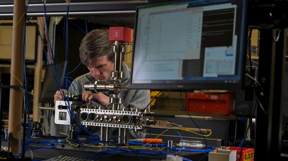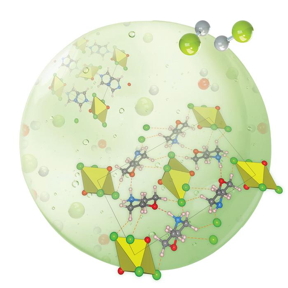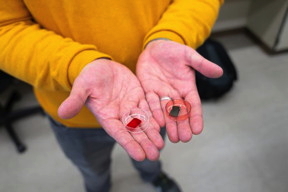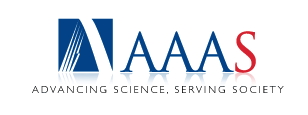Home > Press > The present and future of computing get a boost from new research
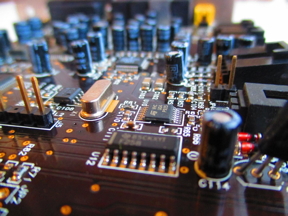 |
Abstract:
The world’s computing needs have grown exponentially in recent years due to an explosion of technology. To meet the needs for the next technological leap, the scientific community is working to improve current processing capabilities and simultaneously develop entirely new computing methods.
The present and future of computing get a boost from new research
Austin, TX | Posted on July 21st, 2023
Two new papers from the research group of Jean Anne Incorvia, a professor in the Cockrell School of Engineering’s Chandra Family of Electrical and Computer Engineering, aim to contribute to both of these scientific needs. Together, they offer improvements on current semiconductor technology as well as a nimbler building block to the next generation of computers that think like the human brain.
“We are on the precipice of a new class of computers, and recreating how our brains think is a tremendous research undertaking,” said Incorvia. “At the same time, computing techniques we use today aren’t going anywhere, so it’s important to continue to improve and innovate on the devices that power our current technology.”
Logic Problem
New research published in ACS Nano relates to transistors and circuits. Within chips are components called logic gates that interpret digital signals.
These logic gates are transistors that can generally conduct either electrons or holes – which occur when electrons move around within atoms – but not both. In this paper, the researchers linked logic gates together that could conduct both electrons and holes.
They show that this achievement reduces the number of transistors needed in a circuit. And that means more transistors could be packed in to the same space, making it both more efficient and powerful, or the saved space could be used to shrink down the device. They also demonstrate a new circuit that specifically leverages the transistor behavior.
The transistors are made out of ultra-thin two-dimensional materials, which have this naturally “ambi-polar” property that allow them to conduct both holes and electrons. However, they didn’t do a great job of it on their own. Refining that capability is a major component of this paper, and through their device engineering they show important XOR, NOR, and NAND circuits without needing any other devices but the ambi-polar transistors. These circuits are the basic building blocks of larger circuits.
“When we think about the future of computing, if we can harness the natural behavior of these 2D materials and scale them, we could cut the number of transistors we need in our circuits in half,” Incorvia said.
The researchers showed this capability at a fairly large device size. Their next steps include shrinking the devices down and further reducing the power consumption needed to make them commercially viable chip components.
Noisy Neurons
These findings apply to current computing technology. A second paper published recently in Applied Physics Letters looks at the next generation of computers, those that think more like the human brain.
These neuromorphic devices are better than traditional computers at AI tasks like interpreting images and language processing. In this new paper, the researchers created a new type of artificial neuron – which in the human brain are responsible for sending information between brain cells – using magnetic materials.
Artificial neurons represent a popular area of neuromorphic computing research. What makes these neuron devices stand out is the chaotic nature of their reactions to electric pulses.
They outperformed other artificial neurons as part of neural networks in interpreting images, specifically when the data to be interpreted was noisy. The devices fared better than other artificial neurons in identifying images of blurry shoes, and the gap widened as the blurrier the images became.
“Because the device itself is stochastic in its respond to the input data, it performed better dealing with noisy data sets,” Incorvia said.
These neurons could be impactful for “edge computing” uses, where devices need to be smaller, use less power and are far removed from a central computing source like a cloud server. They are also resistant to radiation.
One of the initial applications of this technology could come in outer space, where silicon chips struggle to stand up to the high level of radiation. The ability to deal with radiation as well as messy data could make these neurons ideal for future space-based technology.
Incorvia worked with fellow electrical and computer engineering faculty member Deji Akinwande and Joseph Friedman, associate professor of electrical and computer engineering at The University of Texas at Dallas on the ACS Nano research, which was funded by grants from National Science Foundation and U.S. Air Force Research Laboratory. The rest of the project team includes: Xintong Li and Ethan Rivers from the Chandra Family Department of Electrical and Computer Engineering; Peng Zhou and Xuan Hu from UT Dallas’ Department of Electrical and Computer Engineering; and Kenji Watanable and Takashi Taniguchi from the Research Center for Electronic and Optical Materials at the National Institute of Materials Science in Japan.
The Applied Physics Letters research was funded by grants from the National Science Foundation. Incorvia’s team on that project is Thomas Leonard, Samuel Liu and Harrison Jin, all from electrical and computer engineering.
####
For more information, please click here
Contacts:
Nat Levy
University of Texas at Austin
If you have a comment, please Contact us.
Issuers of news releases, not 7th Wave, Inc. or Nanotechnology Now, are solely responsible for the accuracy of the content.
| Related Links |
| Related News Press |
News and information
![]() Billions of nanoplastics released when microwaving baby food containers: Exposure to plastic particles kills up to 75% of cultured kidney cells July 21st, 2023
Billions of nanoplastics released when microwaving baby food containers: Exposure to plastic particles kills up to 75% of cultured kidney cells July 21st, 2023
![]() Understanding the diverse industrial applications of materials science: Materials Science A Field of Diverse Industrial Applications July 21st, 2023
Understanding the diverse industrial applications of materials science: Materials Science A Field of Diverse Industrial Applications July 21st, 2023
Hardware
![]() A Carbon Nanotube Microprocessor Mature Enough to Say Hello: Three new breakthroughs make commercial nanotube processors possible March 2nd, 2020
A Carbon Nanotube Microprocessor Mature Enough to Say Hello: Three new breakthroughs make commercial nanotube processors possible March 2nd, 2020
![]() Powering the future: Smallest all-digital circuit opens doors to 5 nm next-gen semiconductor February 11th, 2020
Powering the future: Smallest all-digital circuit opens doors to 5 nm next-gen semiconductor February 11th, 2020
![]() Do you Kyoto? World-leading companies share their approaches to environmentally friendly business at NAUM’19 October 14th, 2019
Do you Kyoto? World-leading companies share their approaches to environmentally friendly business at NAUM’19 October 14th, 2019
Govt.-Legislation/Regulation/Funding/Policy
![]() A non-covalent bonding experience: Scientists discover new structures for unique hybrid materials by altering their chemical bonds July 21st, 2023
A non-covalent bonding experience: Scientists discover new structures for unique hybrid materials by altering their chemical bonds July 21st, 2023
Possible Futures
![]() Two types of ultrafast mode-locking operations generation from an Er-doped fiber laser based on germanene nanosheets July 21st, 2023
Two types of ultrafast mode-locking operations generation from an Er-doped fiber laser based on germanene nanosheets July 21st, 2023
![]() Detection of bacteria and viruses with fluorescent nanotubes July 21st, 2023
Detection of bacteria and viruses with fluorescent nanotubes July 21st, 2023
![]() A non-covalent bonding experience: Scientists discover new structures for unique hybrid materials by altering their chemical bonds July 21st, 2023
A non-covalent bonding experience: Scientists discover new structures for unique hybrid materials by altering their chemical bonds July 21st, 2023
Chip Technology
![]() Electron collider on a chip June 30th, 2023
Electron collider on a chip June 30th, 2023
![]() Discovering features of band topology in amorphous thin films June 30th, 2023
Discovering features of band topology in amorphous thin films June 30th, 2023
Discoveries
![]() Billions of nanoplastics released when microwaving baby food containers: Exposure to plastic particles kills up to 75% of cultured kidney cells July 21st, 2023
Billions of nanoplastics released when microwaving baby food containers: Exposure to plastic particles kills up to 75% of cultured kidney cells July 21st, 2023
![]() Understanding the diverse industrial applications of materials science: Materials Science A Field of Diverse Industrial Applications July 21st, 2023
Understanding the diverse industrial applications of materials science: Materials Science A Field of Diverse Industrial Applications July 21st, 2023
![]() A non-covalent bonding experience: Scientists discover new structures for unique hybrid materials by altering their chemical bonds July 21st, 2023
A non-covalent bonding experience: Scientists discover new structures for unique hybrid materials by altering their chemical bonds July 21st, 2023
Announcements
![]() Billions of nanoplastics released when microwaving baby food containers: Exposure to plastic particles kills up to 75% of cultured kidney cells July 21st, 2023
Billions of nanoplastics released when microwaving baby food containers: Exposure to plastic particles kills up to 75% of cultured kidney cells July 21st, 2023
![]() Understanding the diverse industrial applications of materials science: Materials Science A Field of Diverse Industrial Applications July 21st, 2023
Understanding the diverse industrial applications of materials science: Materials Science A Field of Diverse Industrial Applications July 21st, 2023
![]() A non-covalent bonding experience: Scientists discover new structures for unique hybrid materials by altering their chemical bonds July 21st, 2023
A non-covalent bonding experience: Scientists discover new structures for unique hybrid materials by altering their chemical bonds July 21st, 2023
Interviews/Book Reviews/Essays/Reports/Podcasts/Journals/White papers/Posters
![]() Billions of nanoplastics released when microwaving baby food containers: Exposure to plastic particles kills up to 75% of cultured kidney cells July 21st, 2023
Billions of nanoplastics released when microwaving baby food containers: Exposure to plastic particles kills up to 75% of cultured kidney cells July 21st, 2023
![]() Understanding the diverse industrial applications of materials science: Materials Science A Field of Diverse Industrial Applications July 21st, 2023
Understanding the diverse industrial applications of materials science: Materials Science A Field of Diverse Industrial Applications July 21st, 2023
![]() Researchers put a new twist on graphite July 21st, 2023
Researchers put a new twist on graphite July 21st, 2023
Grants/Sponsored Research/Awards/Scholarships/Gifts/Contests/Honors/Records
![]() Optical switching at record speeds opens door for ultrafast, light-based electronics and computers: March 24th, 2023
Optical switching at record speeds opens door for ultrafast, light-based electronics and computers: March 24th, 2023
![]() Semiconductor lattice marries electrons and magnetic moments March 24th, 2023
Semiconductor lattice marries electrons and magnetic moments March 24th, 2023
- SEO Powered Content & PR Distribution. Get Amplified Today.
- PlatoData.Network Vertical Generative Ai. Empower Yourself. Access Here.
- PlatoAiStream. Web3 Intelligence. Knowledge Amplified. Access Here.
- PlatoESG. Automotive / EVs, Carbon, CleanTech, Energy, Environment, Solar, Waste Management. Access Here.
- BlockOffsets. Modernizing Environmental Offset Ownership. Access Here.
- Source: http://www.nanotech-now.com/news.cgi?story_id=57372
- :is
- :not
- :where
- $UP
- 10
- 21st
- 27th
- 2D
- 2D materials
- 30th
- 3rd
- 7th
- a
- ability
- About
- accuracy
- achievement
- adaptation
- AI
- aim
- AIR
- Air Force
- Air Force Research Laboratory
- All
- allow
- also
- an
- and
- any
- anywhere
- applications
- applied
- Apply
- approaches
- April
- ARE
- AREA
- around
- artificial
- AS
- Associate
- At
- austin
- award
- Baby
- Bacteria
- BAND
- based
- basic
- BE
- became
- because
- behavior
- Better
- between
- Block
- Blocks
- blood
- boost
- both
- Brain
- brain cells
- brains
- breakthrough
- breakthroughs
- Building
- builds
- burn
- business
- but
- by
- called
- CAN
- capabilities
- capability
- carbon
- Catalyst
- Cells
- Center
- central
- CGI
- challenges
- characteristic
- cheaper
- chemical
- chip
- Chips
- class
- click
- Cloud
- cloud server
- COM
- come
- comment
- commercial
- commercialisation
- commercially
- community
- Companies
- complex
- component
- components
- computer
- Computer Engineering
- computers
- computing
- computing research
- Conduct
- Confirm
- consumption
- Containers
- content
- continue
- contribute
- could
- created
- crucial
- Current
- Cut
- Dallas
- dance
- data
- data sets
- deal
- dealing
- del
- demonstrate
- Department
- develop
- device
- Devices
- digital
- dimensions
- discover
- diverse
- do
- Door
- doors
- down
- dramatically
- due
- dynamics
- Edge
- edge computing
- efficient
- either
- Electric
- Electronic
- Electronics
- electrons
- enable
- end
- Engineering
- Engines
- enough
- entirely
- environmentally
- environmentally friendly
- Ether (ETH)
- experience
- experiments
- Explain
- explosion
- exponentially
- Exposure
- fairly
- family
- far
- faster
- Features
- February
- fellow
- field
- findings
- food
- For
- Force
- Foundation
- Frequency
- friendly
- from
- funded
- further
- future
- future of computing
- gap
- GAS
- Gates
- generally
- generation
- get
- gif
- Global
- going
- grants
- Graphene
- great
- greenhouse gas
- Group
- grown
- Half
- harness
- Have
- help
- High
- Holes
- How
- However
- http
- HTTPS
- human
- Hybrid
- ideal
- identify
- identifying
- if
- images
- Imaging
- impactful
- important
- improve
- improvements
- in
- Inc.
- include
- includes
- industrial
- information
- initial
- initiatives
- innovate
- innovative
- input
- Institute
- institutions
- IT
- ITS
- itself
- January
- Japan
- Job
- jpg
- July
- june
- kidney
- Kills
- laboratory
- landmark
- language
- large
- larger
- laser
- lasers
- lead
- leading
- Leads
- Leap
- leonard
- less
- Level
- leverages
- li
- like
- linked
- links
- logic
- LOOKS
- made
- major
- make
- MAKES
- Making
- March
- materials
- mature
- May..
- means
- Meet
- member
- metal
- methane
- methods
- millions
- more
- more efficient
- move
- nano
- nanotechnology
- National
- National Science
- Natural
- Natural Gas
- naturally
- Nature
- Need
- needed
- needing
- needs
- net
- networks
- Neural
- neural networks
- Neurons
- New
- news
- next
- nexus
- nor
- now
- NSF
- nuclear
- number
- occur
- october
- of
- offer
- Old
- on
- opens
- Operations
- optical
- or
- Other
- our
- out
- outer space
- own
- packed
- Paper
- papers
- part
- partners
- performed
- PHP
- Physics
- plastic
- plato
- Plato Data Intelligence
- PlatoData
- please
- plus
- Pollution
- Popular
- Post
- posted
- power
- powerful
- precipice
- present
- press
- Press Release
- processing
- processors
- Professor
- project
- properties
- property
- published
- put
- Quantum
- quantum computing
- quantum information
- Radiation
- range
- reactions
- recent
- recently
- record
- reduces
- reducing
- refining
- release
- released
- Releases
- remove
- Removed
- represent
- research
- research group
- researchers
- resistant
- Respond
- responsible
- REST
- return
- reveal
- Revealed
- s
- Said
- same
- Save
- say
- scalable
- Scale
- School
- Science
- Science Foundation
- scientific
- scientists
- Search
- Second
- semiconductor
- sending
- Sets
- Share
- show
- showed
- signals
- significant
- Signs
- Silicon
- simultaneously
- Size
- smaller
- smallest
- So
- solely
- Source
- Space
- space-based
- specifically
- speeds
- Spot
- stand
- start
- Steps
- Struggle
- submit
- Sustainability
- synthetic
- system
- T
- tackle
- tasks
- team
- techniques
- technological
- Technology
- texas
- than
- that
- The
- The Future
- their
- Them
- These
- they
- Think
- this
- those
- three
- Through
- time
- to
- today
- together
- toward
- traditional
- tremendous
- twist
- TX
- type
- types
- u.s.
- U.S. Air Force
- unique
- university
- upon
- us
- use
- used
- uses
- using
- viable
- viruses
- was
- Wave
- Way..
- we
- WELL
- What
- when
- which
- wide
- Wide range
- with
- within
- without
- worked
- working
- Workshops
- world
- Yahoo
- years
- you
- zephyrnet











